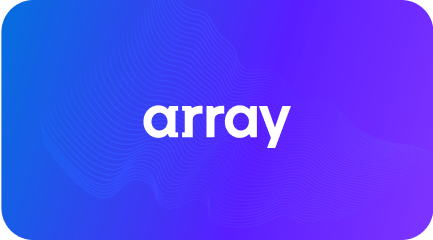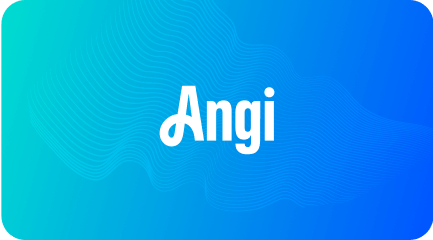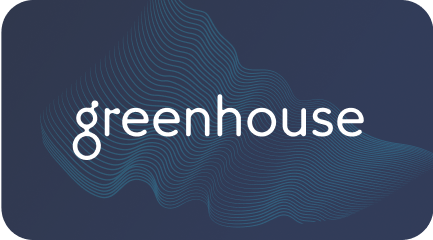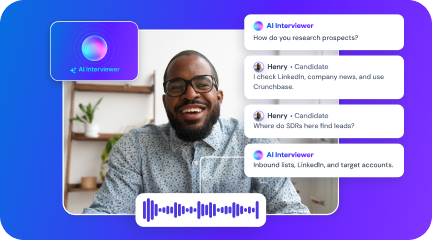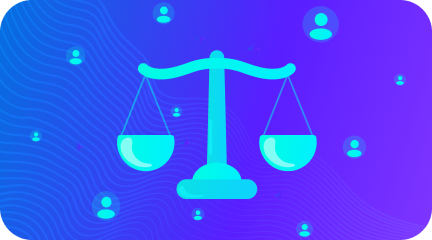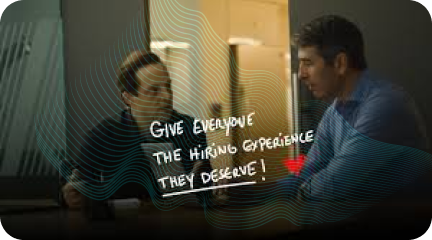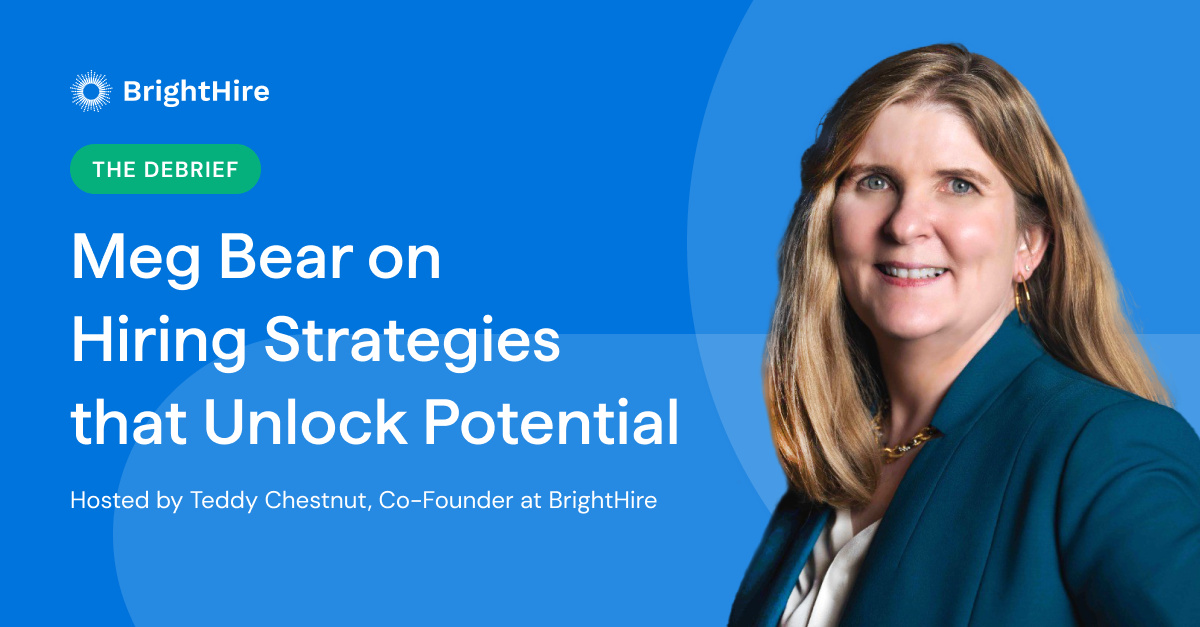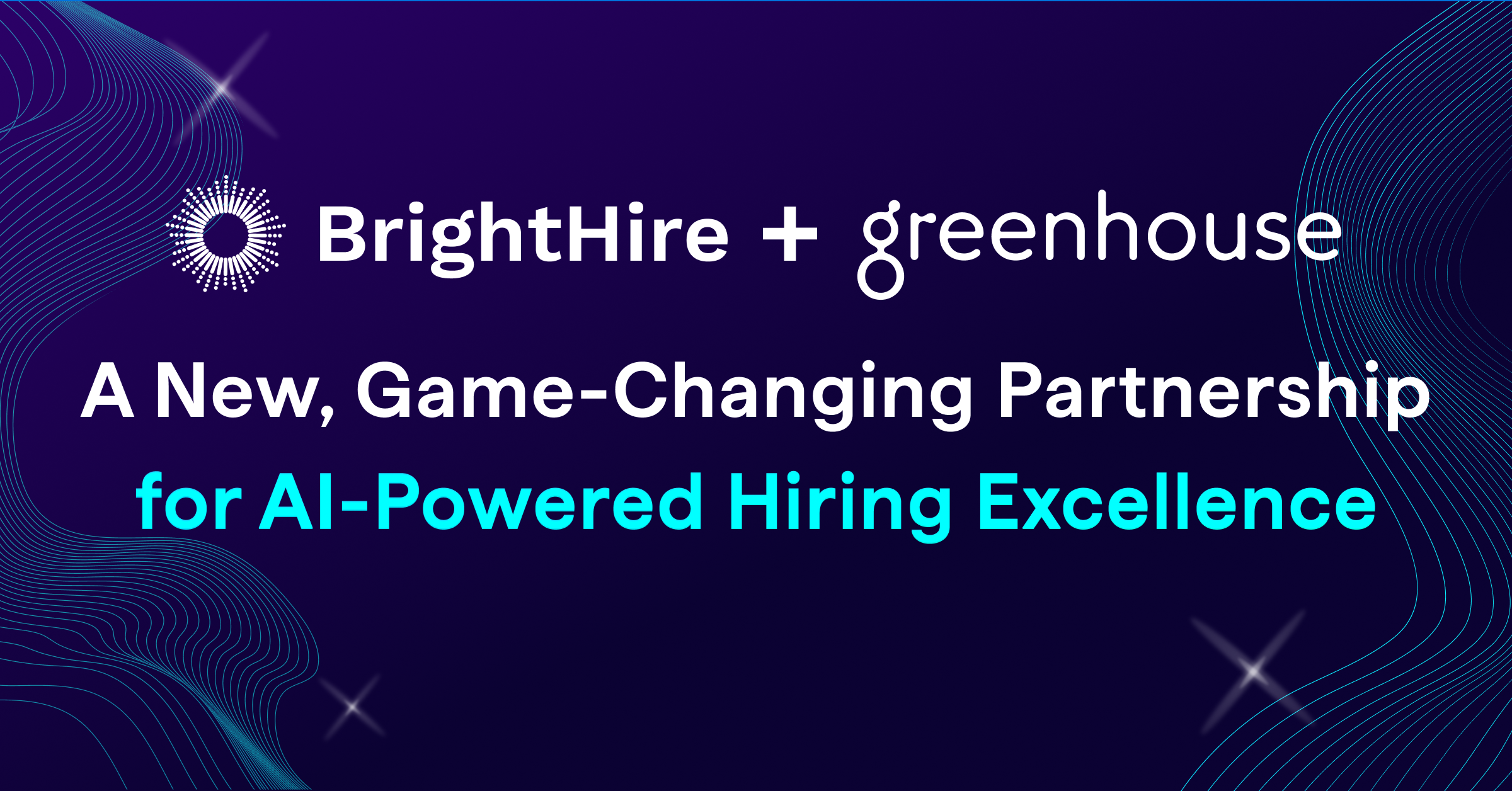On the latest episode of The Debrief, Meg Bear, President & Chief Product Officer at SAP SuccessFactors, joins our Co-Founder Teddy Chestnut to chat about her experience building great teams and hiring for potential.
Over her career, Meg has worked for companies of all sizes, from startups to global companies like Oracle and SAP SuccessFactors. And she’s sharing with us everything she’s learned about hiring along the way, including:
- How she hires for potential
- Her proven framework for identifying the right competencies to hire for
- Why it’s important to hire for skills you don’t possess
- Her favorite interview question
- And so much more
Check out our highlights from the conversation:
Meg’s go-to interview question. Meg’s favorite interview question is, What do you want to learn and why? This question helps you understand how a person thinks, what they’re motivated by, and how to help them achieve greatness.
Building a team that unlocks human potential. Meg says understanding potential is “the most important thing” in today’s constantly evolving world. She believes that hiring for potential isn’t about finding a candidate with a particular skill. Instead, Meg says it’s about finding someone capable of developing new skills, so that you can build a team that’s adaptable.
How to spot potential in candidates. Meg says potential can come in lots of packages. In fact, it often looks different from you and what you’ve seen in the past. To find potential, Meg tries to understand:
- A candidate’s learning agility and how they break down problems
- Their willingness to be vulnerable, make mistakes, and fail in the service of learning
- The individual’s overall curiosity and how they can be a thought partner for the organization at large
Meg’s approach to technical hiring. When it comes to technical hiring, Meg says the best tech leaders understand the difference between proficiency in a specific tool vs. proficiency in the way a candidate thinks, executes, and delivers a solution with the tool. Technical hiring is all about assessing:
- What is the candidate able to deliver?
- Do they care about the end-user experience?
- Do they build things that are reliable and scalable?
Meg’s perspective on internal hiring. Growing and developing people is a passion of Meg’s. She views it not just as a way to open the door to a job but as a development opportunity for internal folks. When hiring internally, Meg gets super clear on what problem she’s trying to solve and what the business needs right now.
Meg’s proven competency framework. Deciding on the competencies to hire for is critical for building a successful team. When it comes to competencies, Meg considers:
- The business’s need – Ask yourself questions like, Do we need a disruptor? Or do we need a continuity story?
- The team’s need – Then, determine the cultural gaps you can fill by bringing this person in (e.g., maybe it’s someone who is detail-oriented vs. a strategic thinker). Ask yourself, What does the team need to round us out and elevate all of us?
- Tip: Meg says you can uncover ways a candidate can fill in cultural gaps by asking, What’s uniquely amazing about you? How do you share that in service of others?
Hiring for skills you don’t possess. Meg says hiring is all about knowing what your team is good at, what they aren’t good at, and how the next hire can help shore that up and make your team better. But sometimes hiring people who have skills that you don’t possess yourself can feel uncomfortable. Meg says, “You want to be confident enough to do that because the better you can be at thinking like that, the fewer barriers you put in the way of your own career projections and growth.”
The role of AI in HR. Previously, technology has primarily helped corporations. But with the breakthrough of AI, Meg believes it presents an opportunity to help individuals maximize their potential. She says “I think we have a really great opportunity to redefine where this value is and who this value is for.” At the same time, she advises leaders to be mindful of:
- How do we take the promise of AI and make it helpful for people?
- How do we keep them informed of what’s really happening when they use these tools?
- How do we protect them from making mistakes?
Listen to Meg’s podcast episode or watch the entire conversation below:
